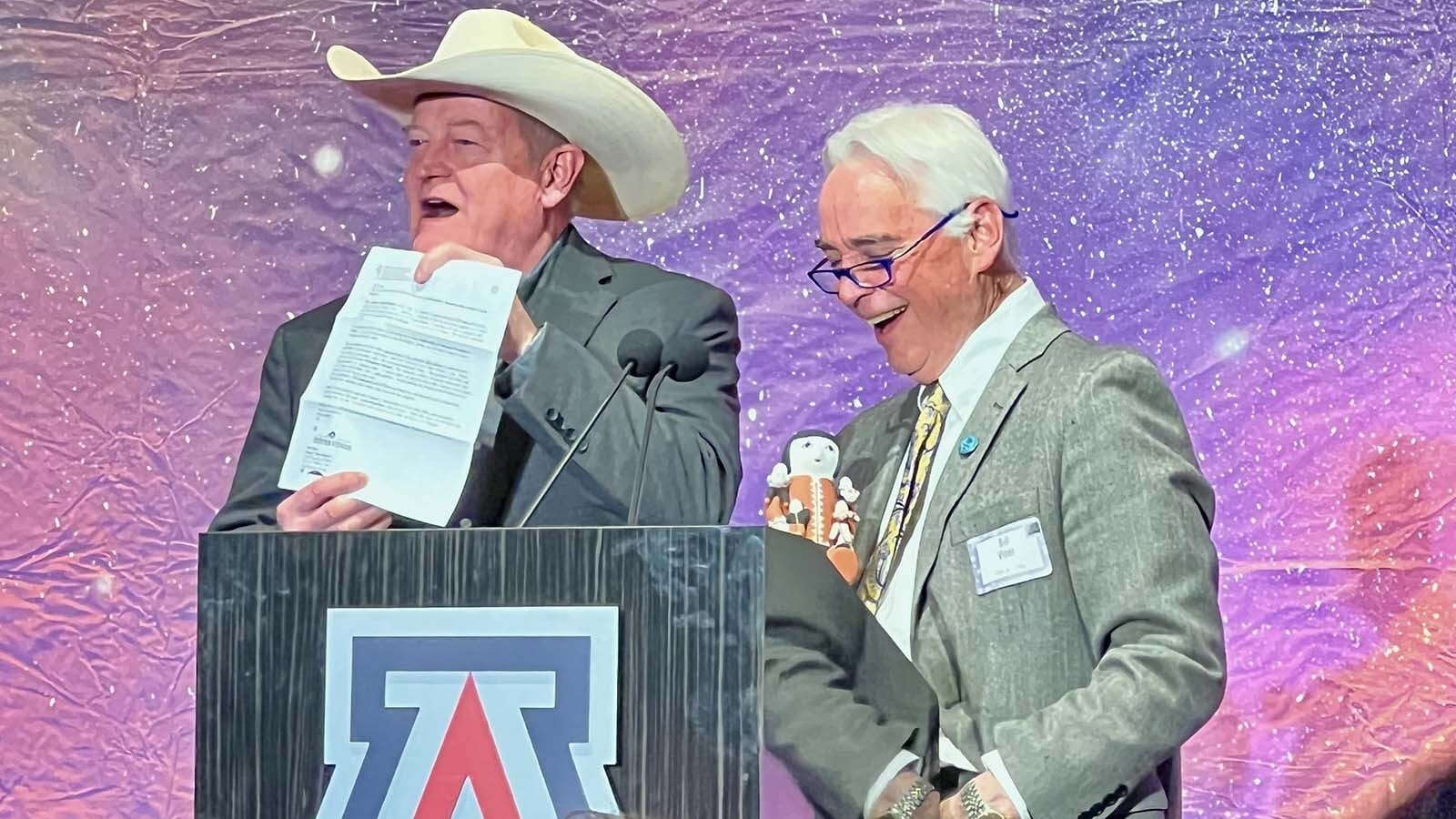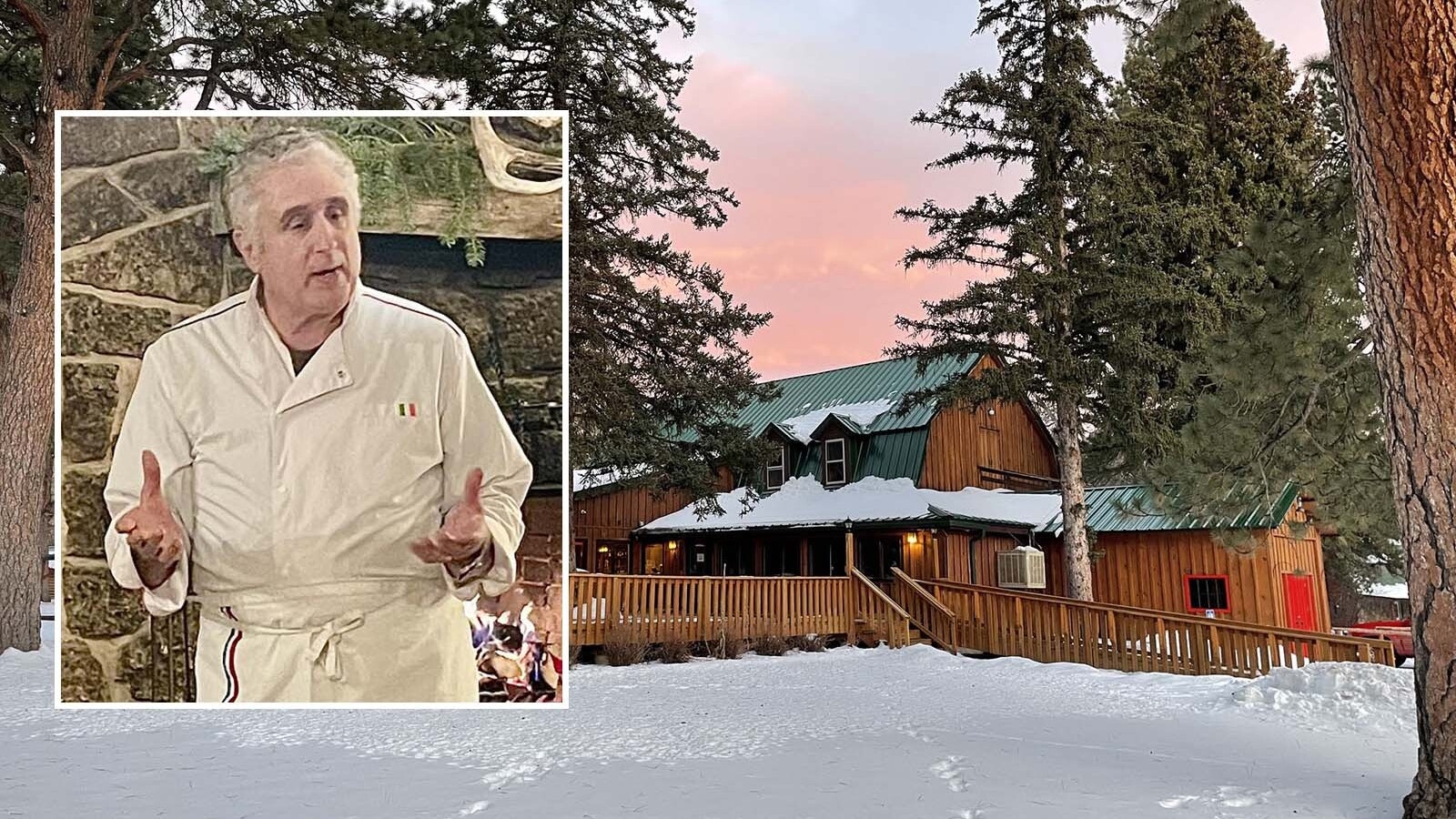Natural Trap Cave in Bighorn National Forest is one of the world’s best Ice Age fossil sites. Fossils found at the bottom of the 85-foot hole include the Late Pleistocene ancestors of Wyoming’s modern-day rabbits, deer, bighorn sheep and bison, in addition to American lions and cheetahs, camels, short-faced bears and mammoths.
While Natural Trap Cave is an incredible representation of Late Pleistocene wildlife, there are a few metaphorical elephants that aren’t in the room. Two iconic Ice Age species have never been found in Natural Trap Cave and likely never will be.
Giant ground sloths and saber-toothed cats were everywhere in North America during the Late Pleistocene, but they are utterly absent in Natural Trap Cave.
Where are they? Or rather, where weren’t they?
Pieces And Parts
Julie Meachen, a mammalian biologist at Des Moines University, has been descending into Natural Trap Cave for several years. Her team is trying to piece together the paleoecology of the Late Pleistocene by studying the large and small fossils preserved at its depths.
“This summer, we found a lot of stuff that we haven't found much of in the past,” she told Cowboy State Daily. “We found several scapulae of multiple species, including bighorn sheep and American lion, and the other big thing we found was a vertebra from a mammoth. We have found very few mammoths there, so that was really interesting.”
All the fossils in Natural Trap Cave are disarticulated, which means they find individual bones of the Ice Age animals rather than partial or complete skeletons. Meachen said the most likely explanation is that water moved and scattered the skeletons before they were buried.
“We think there was a lot more water movement in Natural Trap Cave’s past,” she said. “The cave is all made of limestone and has all these different drains. We think there were times in the cave's history when those drains were plugged up. If a lot of water came in and the drains weren't draining right, there might have been a water movement experience or even a flash flood in the cave that disarticulated the specimens.”
Despite the disarticulation, Meachen and her colleagues have pieced together the entire ecosystem of northwest Wyoming 30,000 years ago. At the chilly depths of Natural Trap Cave, they have found everything from massive mammoth bones to microscopic pollen grains (and a modern-day packrat that they watched decompose for three years).
However, despite decades of research and hundreds of fossils, they’ve never found a single scrap from iconic Ice Age species common in North America during the Late Pleistocene.
“We do not have sloths or saber-toothed cats in Natural Trap Cave,” Meachen said.
Sloths And Saber-tooths
Ground sloths and saber-toothed cats were common animals in North and South America during the Pleistocene. Several species shared the prehistoric world, and their fossils are commonly found alongside other Ice Age species.
The La Brea Tar Pits in Los Angeles, California, is one of the most famous fossil sites in the world. Over 35 million specimens have been recovered from the site’s pits of natural asphalt, which have preserved fossils of Ice Age animals from the last 50,000 years.
Three species of ground sloth and two kinds of saber-toothed cats, Smilodon and Homotherium, have been found in large quantities at La Brea. Smilodon, the largest and most famous of the saber-toothed cats, is one of the most common predators in the asphalt pits, second only to the dire wolf.
Meachen has worked extensively at La Brea and Natural Trap Cave, making her an expert on both paleoenvironments.
“I have been in the process of comparing and contrasting the two sites,” she said. “They are deposited at exactly the same time in Earth's history, and the species overlap to some degree.”
Both La Brea and Natural Trap Cave have mammoths, short-faced bears, dire wolves, camels, and many other large mammals. But while sabertoothed cats and sloths are abundant in La Brea, they’re nowhere to be found at Natural Trap Cave.
Scientists can learn about from what they don’t find. And the absence of sloth and saber-tooths reveals what Wyoming was and wasn’t 30,000 years ago.
Evidence In Absence
Extensive research on the animals and ecology at the La Brea Tar Pits has given Meachen a better understanding of how the Late Pleistocene environment differed from the one preserved at Natural Trap Cave. While both sites date back to the same time, they were as different then as California and Wyoming are today.
“The difference between them is the moisture level,” she said. “Rancho La Brea wasn’t super-wet. It was a chaparral environment, like the Mediterranean or South Africa. Natural Trap Cave is one click above that on the dryness scale. The area was arid and dry.”
The difference between the two Ice Age environments means the flora and fauna would have differed. Meachen said the fossils collected at both sites established their environmental differences.
“Rancho La Brea has more animals that are tree or forest-oriented,” she said, “while the animals at Natural Trap Cave are animals that are oriented to an open environment.”
During the Late Pleistocene, Rancho La Brea was warm and dry but moist enough to support leafy trees and bushes. At the same time, Natural Trap Cave existed in a wide, flat area that was too dry to support anything other than pine trees and juniper.
The plants in these environments determined what kind of plant-eating animals lived there and the meat-eating animals that preyed upon them. Because of this, Meachen said northwest Wyoming wasn’t a good neighborhood for foraging sloths or ferocious saber-toothed cats.
“Sloths like leafy trees,” she said. “The air at Natural Trap Cave was too dry, and there weren’t enough trees. Pine and juniper aren’t what sloths like to eat, so that's probably why they weren't there. They just didn't have good food.”
The lack of tree growth would also explain the absence of Smilodon and saber-toothed cats at Natural Trap Cave. They weren’t herbivores but were adapted to an herbivorous environment.
“Saber-toothed cats need the cover of bushes and things to hunt, and there probably weren’t enough bushes at Natural Trap Caves,” she said. “The environment fluctuated over time, but it was never like a forest. It hasn’t changed a lot in the last 100,000 years.”
Climate Collapse
Climate change is believed to be one of the primary factors in the extinction of North America’s megafauna. Meachen’s current research focuses on how climate change impacted the large animals of the Late Pleistocene.
“We’re looking at the long bones and teeth of the ungulates and some carnivores to see if they changed through time and in association with climate drying,” she said. “We’ve got a wonderful pollen record, and isotopes and bacterial samples from the dirt that give us a really good record of the climate over the last 30,000 years to 50,000 years, and we want to see if the animals are changing in response to that climate.”
Within 20,000 years, ground sloths, saber-toothed cats, mammoths, and many other Ice Age species went extinct in California and Wyoming. Rancho La Brea and Natural Trap Cave were already arid environments, but their worlds were rapidly drying out.
Meachen and her colleagues have plenty to work with from their ongoing excavations at Natural Trap Cave. That’s why Meachen still smiles even though she hasn’t found a Smilodon in northwest Wyoming. The lack of sloths won't slow her research, either.
“Natural Trap Cave never disappoints,” she said. “It’s always productive.”
Andrew Rossi can be reached at arossi@cowboystatedaily.com.









